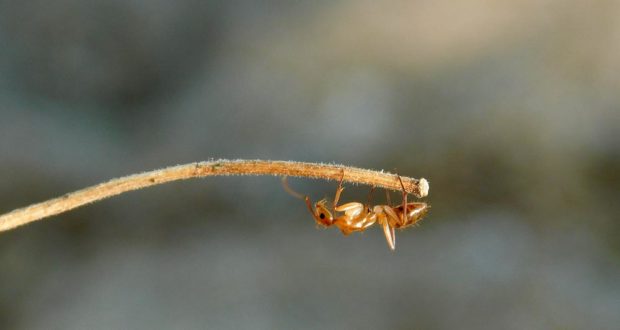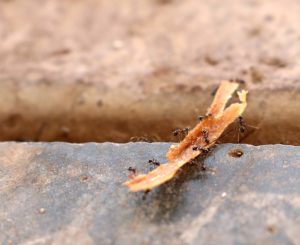The Galapagos have 24 ant species, but only four are endemic. The Longhorn Ant (Paratrechina longicornis) is a small, black import from Africa and Asia. It gets its name from its sprawling antennae, which are as long as its body. The most common of the endemic species is the Galapagos Carpenter Ant (Camponotus macelentus), a brown ant whose nests are a series of connected galleries hollowed out of wood. A number were crawling on the trees and stumps stumps along Playa Mann. Not surprisingly, recent arrivals have become more of a problem, including the Little Red Fire Ant (Wasmannia auropunctata), which is common on all the inhabited islands and poses a threat to native ant species and other wildlife.
Galapagos Carpenter Ant (Camponotus macilentus). Photo / Rebecca Keim
Ants on a mission
Staring at the ground, my colleagues Rebecca Keim and Tyler Pugh were transfixed for almost an hour as a horde of Longhorn Ants struggled to carry a flake of pastry across the pavement. At times, the ants seemed to be working at cross purposes, but in fits and starts the tasty morsel moved steadily ahead. When they came to a break in the concrete, they had to improvise. Some pushed from one end while others pulled from the opposite side; a few stragglers hung on in the middle, dangling over the abyss. Every once it a while, they had to move down the edge in search of a more narrow gap.
It’s tempting to feel the ants’ frustrations, imagine them huddling to talk through a new approach and returning with dogged persistence to pursue their goal. But there isn’t much to an ant. Their social behavior is programmed into their genome, and responds to subtle chemical and environmental cues.

